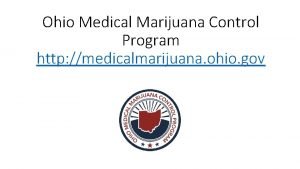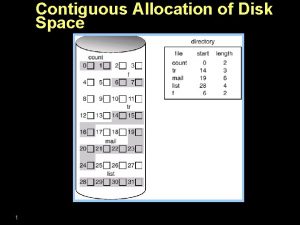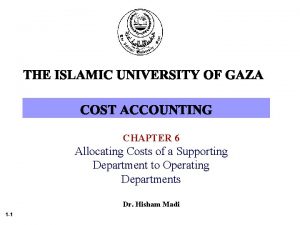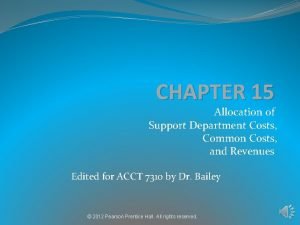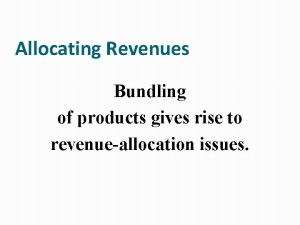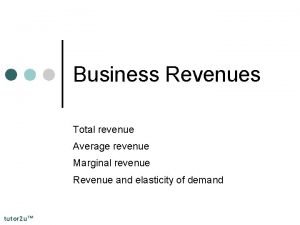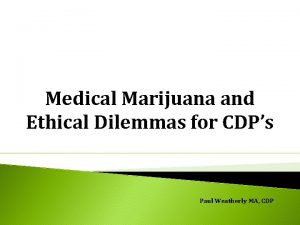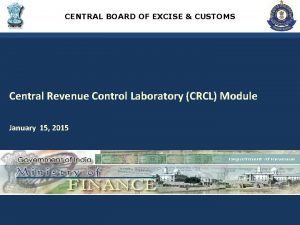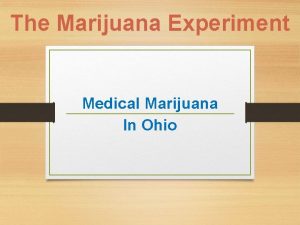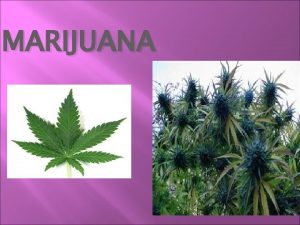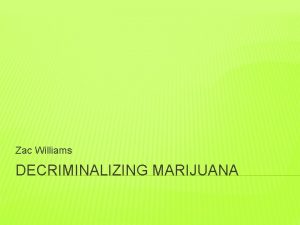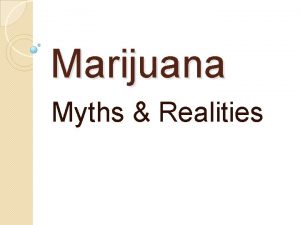Liquor and Marijuana Revenue Allocation OREGON LIQUOR CONTROL












- Slides: 12

Liquor and Marijuana Revenue Allocation OREGON LIQUOR CONTROL COMMISSION PRESENTATION TO ALCOHOL AND DRUG POLICY COMMISSION SEPTEMBER 26, 2019 STEVE MARKS, EXECUTIVE DIRECTOR BILL SCHUETTE, CHIEF FINANCIAL OFFICER

Liquor Revenue Sources Available for Distribution Net profit on distilled liquor sales ($750 million per biennium) 37% of the gross sales of bottle of liquor Wine and Beer Tax ($40 million per biennium) $0. 67 per gallon for table wine (less than 14% ABV) 2 cents per gallon goes to the Oregon Wine Board $0. 77 per gallon fortified wine (greater than 14% ABV) 2 cents per gallon goes to the Oregon Wine Board $0. 008 per gallon for malt beverage Liquor License Fees ($12 million per biennium)

Distilled Spirits Model Based on Average $17 Bottle Price 4% OLCC Operating Expenses Includes Enforcement, Licensing, Administration, Distribution functions 1% Bank Card Costs 37% Distribution to State, Cities and Counties 75% of all purchases made with bank cards 9. 01% Liquor Store Operator Commission Average Liquor Store Operator Compensation 49% Manufacturer Cost Manufacturers cost is the price sold to OLCC – it includes profit and the cost of production and marketing

Liquor Revenue Distribution to Mental Health Alcoholism and Drug Services 50% of Beer and Wine Taxes ($20 million per biennium) distributed to Mental Health Alcoholism and Drug Services Account ORS 430. 380 40% to counties for drug and alcohol treatment 40% to OHA for alcohol and drug abuse prevention with potential allocations to counties for sobering centers 20% to OHA for services for inmates

Liquor Revenue Distribution to Oregon Wine Board 2 cents of every gallon of wine produced distributed to Oregon Wine Board ($700, 000 per biennium) 1. 75% of total wine and beer tax collections OLCC collects a $25 per ton tax on all wine grapes harvested and passes that directly to the Oregon Wine Board About $4 million per biennium

Liquor Revenue Distribution to Cities, Counties and State General Fund Liquor Revenue distributed to Cities, Counties, and State General fund 50% of beer and wine taxes All distilled spirits liquor profits Liquor license fees Miscellaneous revenue Deduct agency operational expenses Distribution Formula (ORS 471. 810) 56% to State General Fund 20% to Cities 14% City Revenue Sharing 10% to Counties

Liquor Revenue Distribution to Cities and Counties can be used for any purpose City Revenue Sharing distribution can be used for any purpose but there are conditions to cities to receive it (ORS 221. 770) Elect to receive distributions by filing with DAS Holds public hearings related to proposed city budget Levied property tax in the preceding year. Additional General Fund Distribution through Per Bottle Surcharge $0. 50 per bottle surcharge added to the sales price and dedicated to General Fund. Need Commission approval to be renewed every biennium Other notes on Liquor Distributions Need to be done monthly; 34 day statutory deadline for distributions

Marijuana Tax Revenue Generation Marijuana tax revenue is generated by sales at OLCC licensed marijuana retailers 658 licensed retailers as of September 19, 2019 Sales of products containing THC taxed at 17%, Retailers may retain 2% to cover their cost of collection Local governments must opt-in to collect an extra 3% 2019 -21 estimated $251 million in marijuana tax revenue distribution (Office of Economic Development)

Marijuana Tax Revenue Collection and Distribution Taxes are collected and distributed by Department of Revenue (ORS 475 B. 759 Oregon Marijuana Account) DOR withholds money to cover administrative expenses (ORS 475 B. 760) DOR must distribute next to OLCC and Oregon Criminal Justice Commission $7 million per biennium to OLCC for medical marijuana tracking $3 million per biennium to OCJC for enforcement grants Quarterly distributions Note: OLCC’s recreational marijuana program is funded through license fees

Marijuana Tax Revenue Collection and Distribution Remaining Tax Distribution 10% to Cities with no opt out provisions for marijuana licenses 75% share distributed by population 25% share distributed by number of marijuana licenses held in the city 10% to Counties with no opt out provisions for marijuana licenses 50% share based on total available grow canopy 50% shared based on the number of marijuana licenses held in the county 40% to state school fund (ORS 327. 008) 20% to Mental Health Alcoholism and Drug Services (ORS 430. 380) 15% to State Police Account (ORS 181 A. 020) 5% to Alcohol and Drug Abuse Prevention

Other types of Distributions from OLCC Marijuana Revenues OLCC is forecast to collect $25 million in the current biennium from Marijuana license fees About $20 million is required to cover program costs $4. 6 million is allocated from Recreational Marijuana to Liquor to cover Support Services costs $169, 000 was being allocated to OHA to cover GIS and other mapping costs $292, 000 is being allocated to the Oregon Department of Agriculture to agency costs related to marijuana regulation (funds 1 FTE) These are allocations done within the budget process OLCC marijuana program fee funded

 Medicalmarijauna ohio gov
Medicalmarijauna ohio gov Contiguous allocation vs linked allocation
Contiguous allocation vs linked allocation Incremental revenue allocation method
Incremental revenue allocation method Revenue allocation methods
Revenue allocation methods Stand alone revenue allocation method
Stand alone revenue allocation method Marijuana pros and cons chart
Marijuana pros and cons chart Marginal revenue
Marginal revenue Became marijuana state
Became marijuana state Should marijuana be a medical option
Should marijuana be a medical option Lungs marijuana
Lungs marijuana Marijuana names
Marijuana names Medical marijuana ethics
Medical marijuana ethics Central revenue control laboratory manual
Central revenue control laboratory manual
